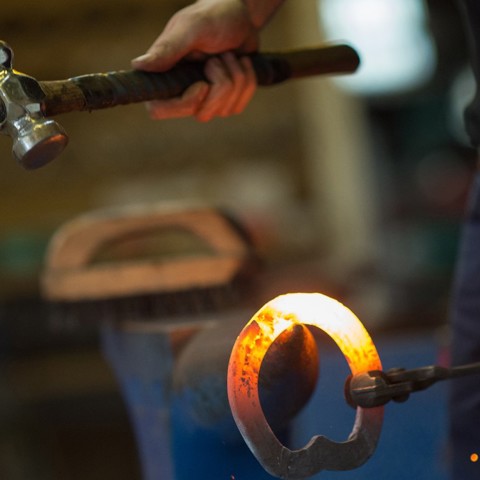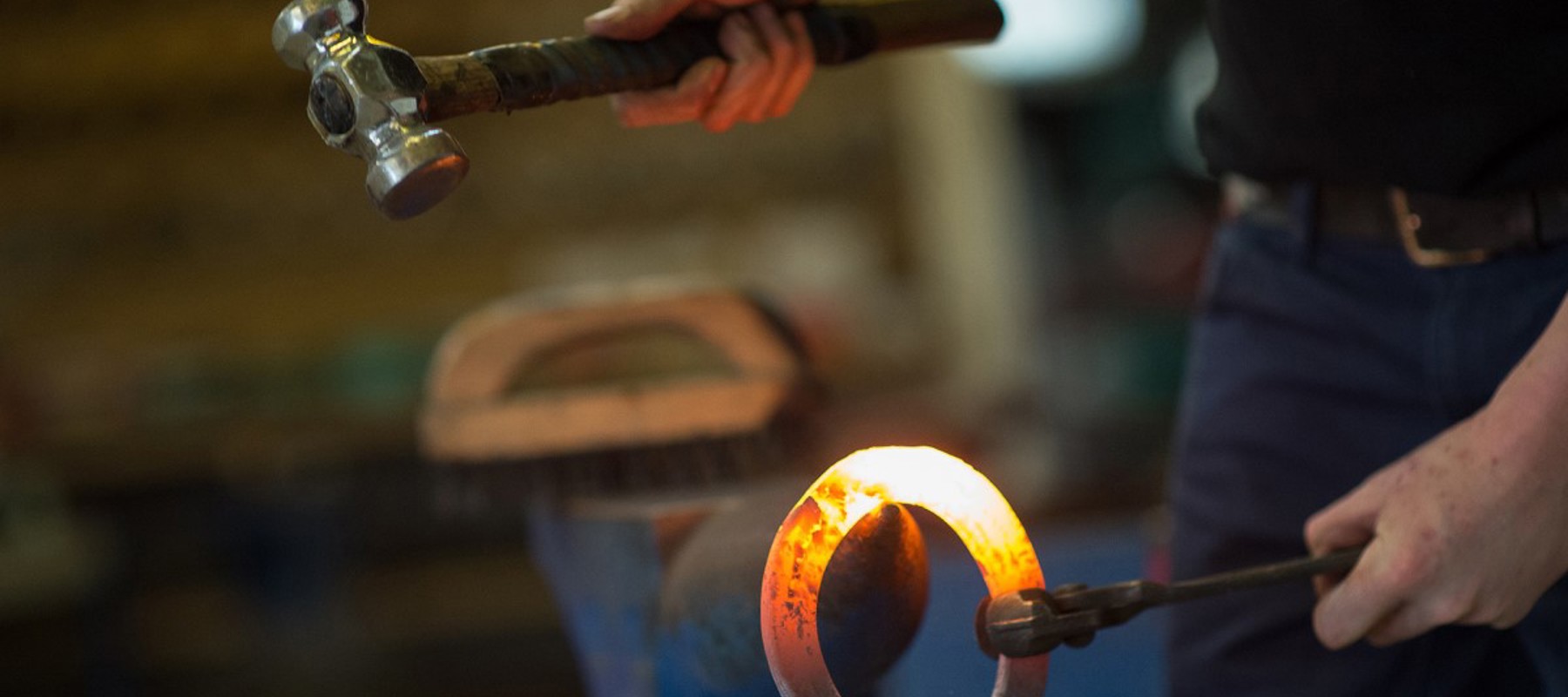Qualified farriers have flexibility in either working for themselves or moving into an employed role with establishments such as mounted regiments of the police or army, in equine veterinary hospitals or with large yards.
Farriers need to be physically fit and strong with good practical skills. As farriers continually advise and speak with owners and vets, good communication skills are also essential.
How to become a farrier
Accredited by the Farriers Registration Council, qualified farriers complete a four-year advanced apprenticeship while employed by an Approved Training Farrier and also studying core modules at one of three colleges: Herefordshire and Ludlow, Myerscough College or Warwickshire.
There is a minimum age of 16 years to enter the advanced apprenticeship, however, there is no upper age limit.
The BHS Stage 1 and 2 Care assessments following the BHS Groom Pathway provide a great foundation of equine physiology and hoof management prior to progressing to an apprenticeship. You may also like to widen your knowledge and understanding to incorporate the ridden horse and how movement affects shoeing practice and how nutrition affects the hoof growth. BHS Stage 2 Foundation Coach in Complete Horsemanship provides an in-depth foundation knowledge and understanding of equine care and management, lungeing, riding and the initial principles of teaching and coaching to support a trainee farrier role.
Benefits
- Great opportunities to be self employed
- Your skills as a farrier can diversify into working as a blacksmith, creating more opportunities to showcase your creative skills


